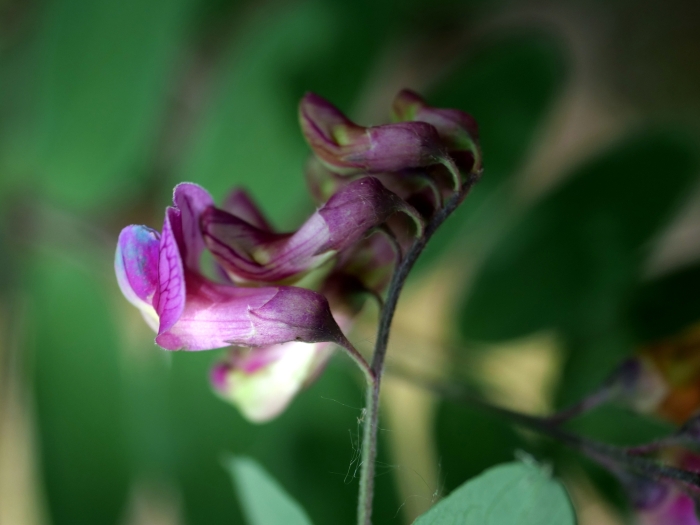Black Pea
(Lathyrus niger)
Black Pea (Lathyrus niger)
/
/

Wolfgang Jauch
CC BY 4.0
Image By:
Wolfgang Jauch
Recorded By:
Copyright:
CC BY 4.0
Copyright Notice:
Photo by: Wolfgang Jauch | License Type: CC BY 4.0 | License URL: http://creativecommons.org/licenses/by/4.0/ | Rights Holder: Wolfgang Jauch | Publisher: iNaturalist | Date Created: 2023-05-27T13:10:25-07:00 |

























Estimated Native Range
Summary
Lathyrus niger, commonly known as Black Pea or Black Bitter Vetch, is a perennial herb that is part of the legume family. It is native to a variety of habitats across Europe, including broad-leaved woodlands, forest margins, and woodland clearings. This plant typically grows to a height of 12-31 inches (30-80 cm) with erect, self-supporting stems. Its pinnate leaves consist of four to eight pairs of narrow elliptical leaflets, creating a delicate, feathery appearance. The flowers of Lathyrus niger are initially red but mature to a blue hue as they age, blooming in June and July. They are pollinated by bees and are modest in size, contributing to the plant’s understated charm.
Black Pea is valued for its ability to thrive in shaded environments, making it suitable for woodland gardens and shaded borders. It is also used to enhance biodiversity as it is a nitrogen-fixing plant, improving soil fertility. The plant’s foliage turns black as it senesces, which is a distinctive feature. However, it is important to note that the seeds contain toxic compounds that can cause lathyrism if ingested, so they should not be consumed. In cultivation, Black Pea prefers moist, well-drained soils and can tolerate partial shade to full shade conditions. While not commonly used for ornamental purposes, its ecological benefits make it a candidate for naturalized plantings and restoration projects.CC BY-SA 4.0
Black Pea is valued for its ability to thrive in shaded environments, making it suitable for woodland gardens and shaded borders. It is also used to enhance biodiversity as it is a nitrogen-fixing plant, improving soil fertility. The plant’s foliage turns black as it senesces, which is a distinctive feature. However, it is important to note that the seeds contain toxic compounds that can cause lathyrism if ingested, so they should not be consumed. In cultivation, Black Pea prefers moist, well-drained soils and can tolerate partial shade to full shade conditions. While not commonly used for ornamental purposes, its ecological benefits make it a candidate for naturalized plantings and restoration projects.CC BY-SA 4.0
Plant Description
- Plant Type: Herb
- Height: 2-3 feet
- Width: 1-3 feet
- Growth Rate: Moderate
- Flower Color: Pink, Purple, Red
- Flowering Season: Summer
- Leaf Retention: Deciduous
Growth Requirements
- Sun: Part Shade, Full Shade
- Water: Medium
- Drainage: Medium
Common Uses
Bee Garden, Border Plant, Low Maintenance
Natural Habitat
Broad-leaved woodlands, forest margins, and woodland clearings
Other Names
Common Names: European Black Pea, Black Bitter Vetch
Scientific Names: , Lathyrus niger, Lathyrus jordanii, Orobus niger, Pisum nigrum,
GBIF Accepted Name: